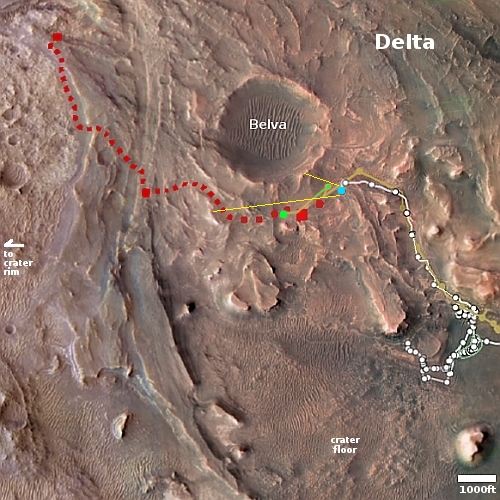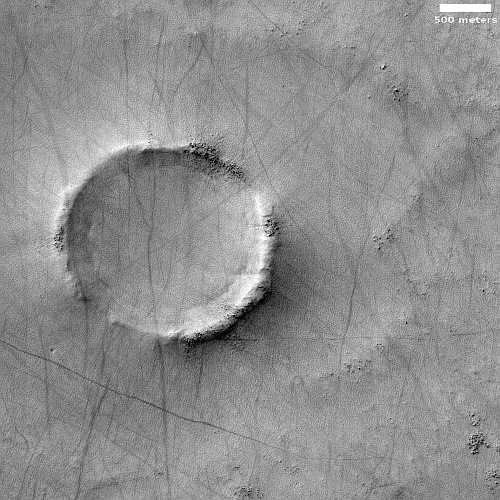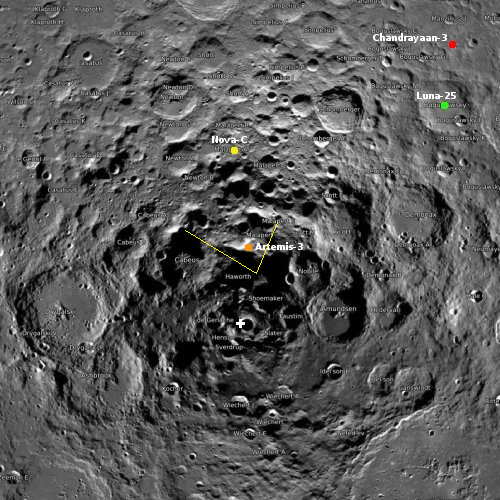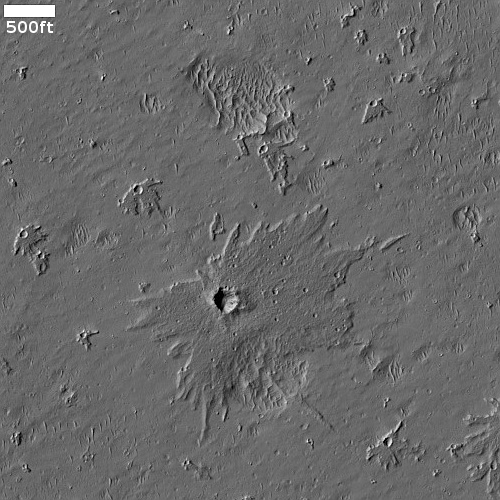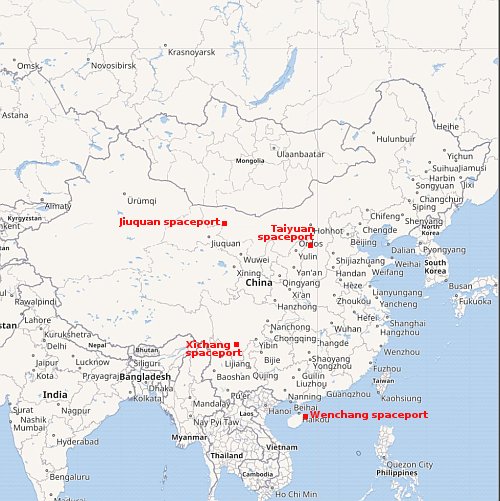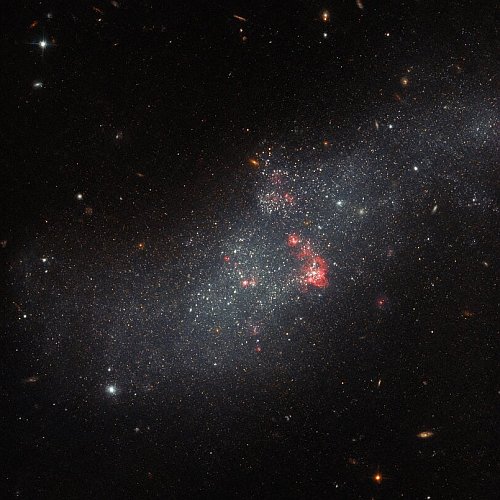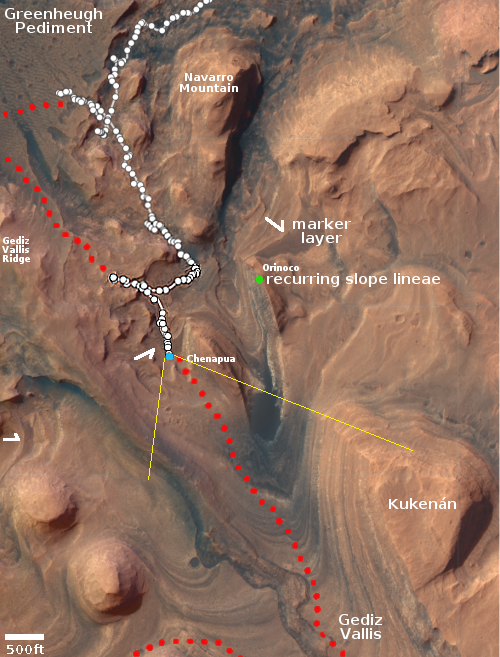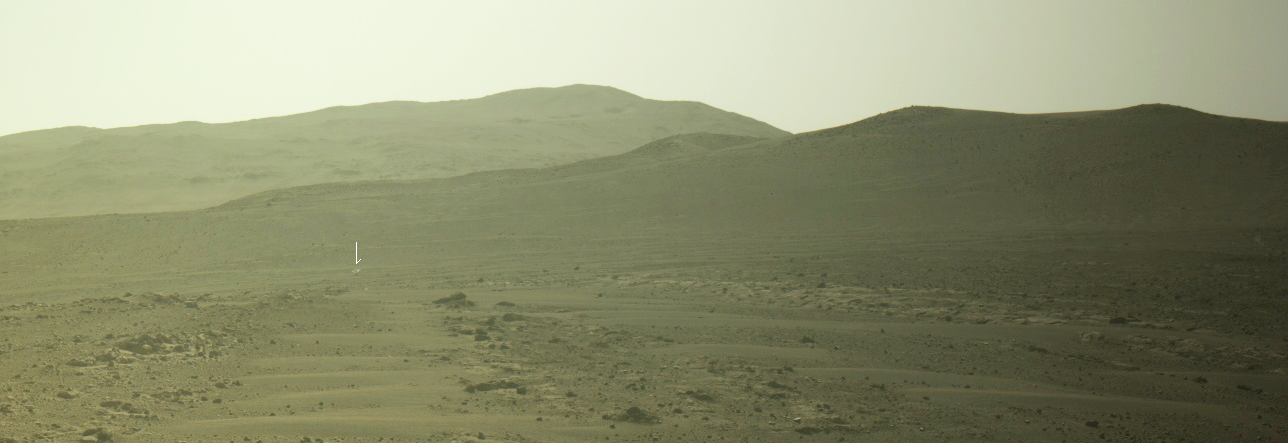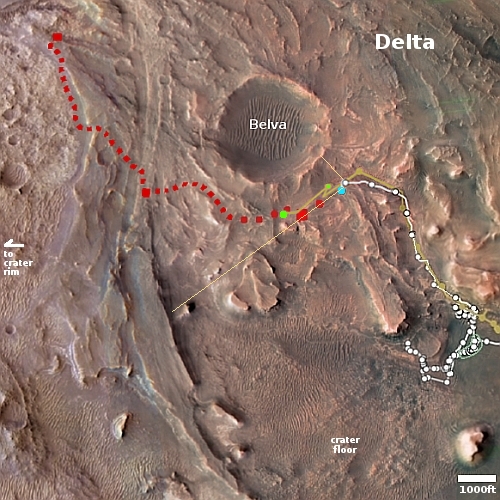Perseverance captures a movie of Ingenuity’s 47th flight on Mars
During Ingenuity’s 47th flight on Mars on March 9, 2023, one of Perseverance’s high resolution camera’s took rapid-fire images of the helicopter’s take-off and initial flight, from which the science team created a movie.
The overview map to the right provides the context for that movie at the link. The blue dot marks Perserverance’s location, with the yellow lines indicating the approximate area seen in the movie. The smaller green dot and line indicates Ingenuity’s take-off point and part of its flight seen in the movie, with the larger green dot its landing spot. From the press release:
This video shows the dust initially kicked up by the helicopter’s spinning rotors, as well as Ingenuity taking off, hovering, and beginning its 1,444-foot (440-meter) journey to the southwest.
At take-off Ingenuity was 394 feet away from Perseverance.
During Ingenuity’s 47th flight on Mars on March 9, 2023, one of Perseverance’s high resolution camera’s took rapid-fire images of the helicopter’s take-off and initial flight, from which the science team created a movie.
The overview map to the right provides the context for that movie at the link. The blue dot marks Perserverance’s location, with the yellow lines indicating the approximate area seen in the movie. The smaller green dot and line indicates Ingenuity’s take-off point and part of its flight seen in the movie, with the larger green dot its landing spot. From the press release:
This video shows the dust initially kicked up by the helicopter’s spinning rotors, as well as Ingenuity taking off, hovering, and beginning its 1,444-foot (440-meter) journey to the southwest.
At take-off Ingenuity was 394 feet away from Perseverance.


